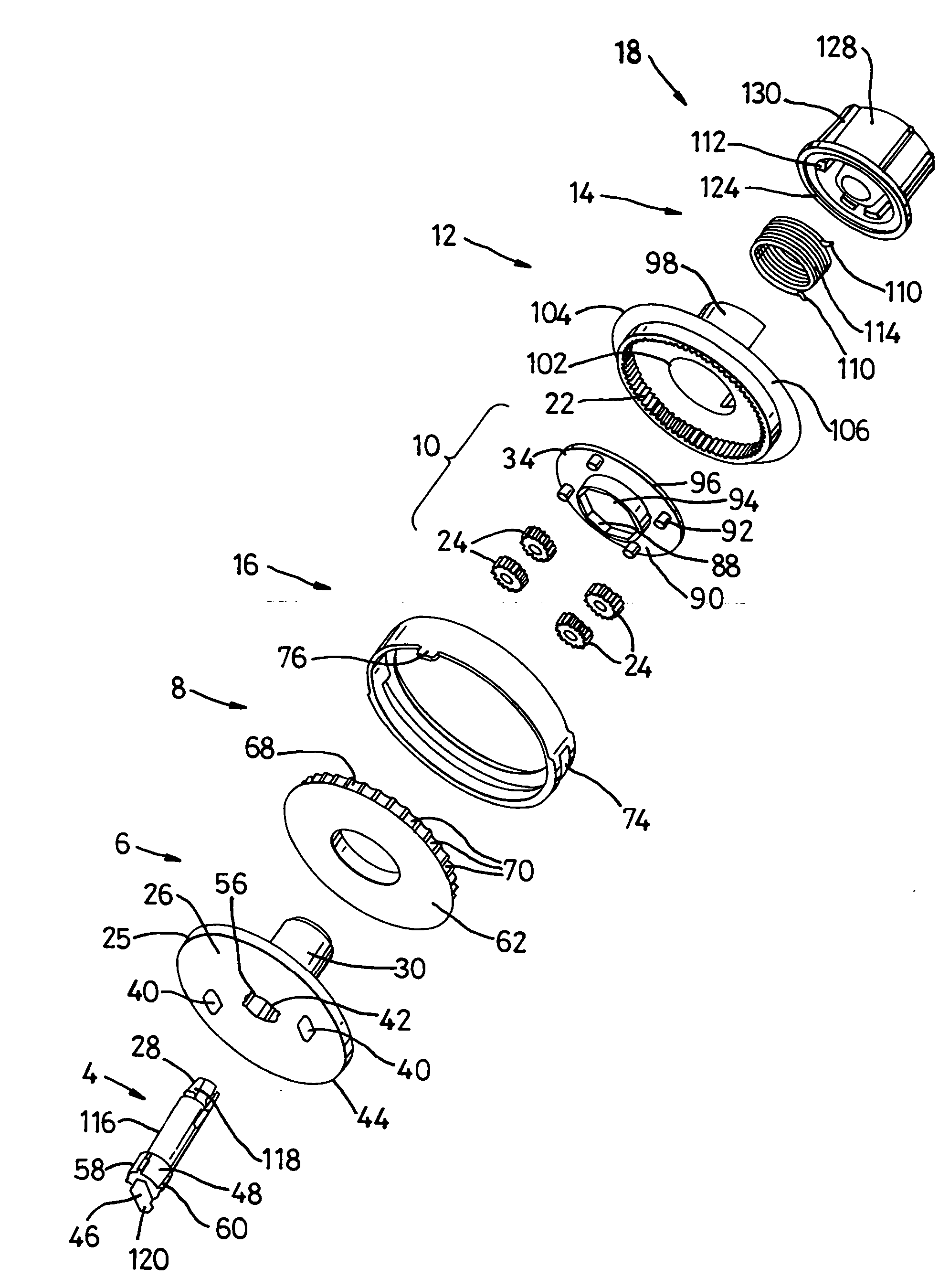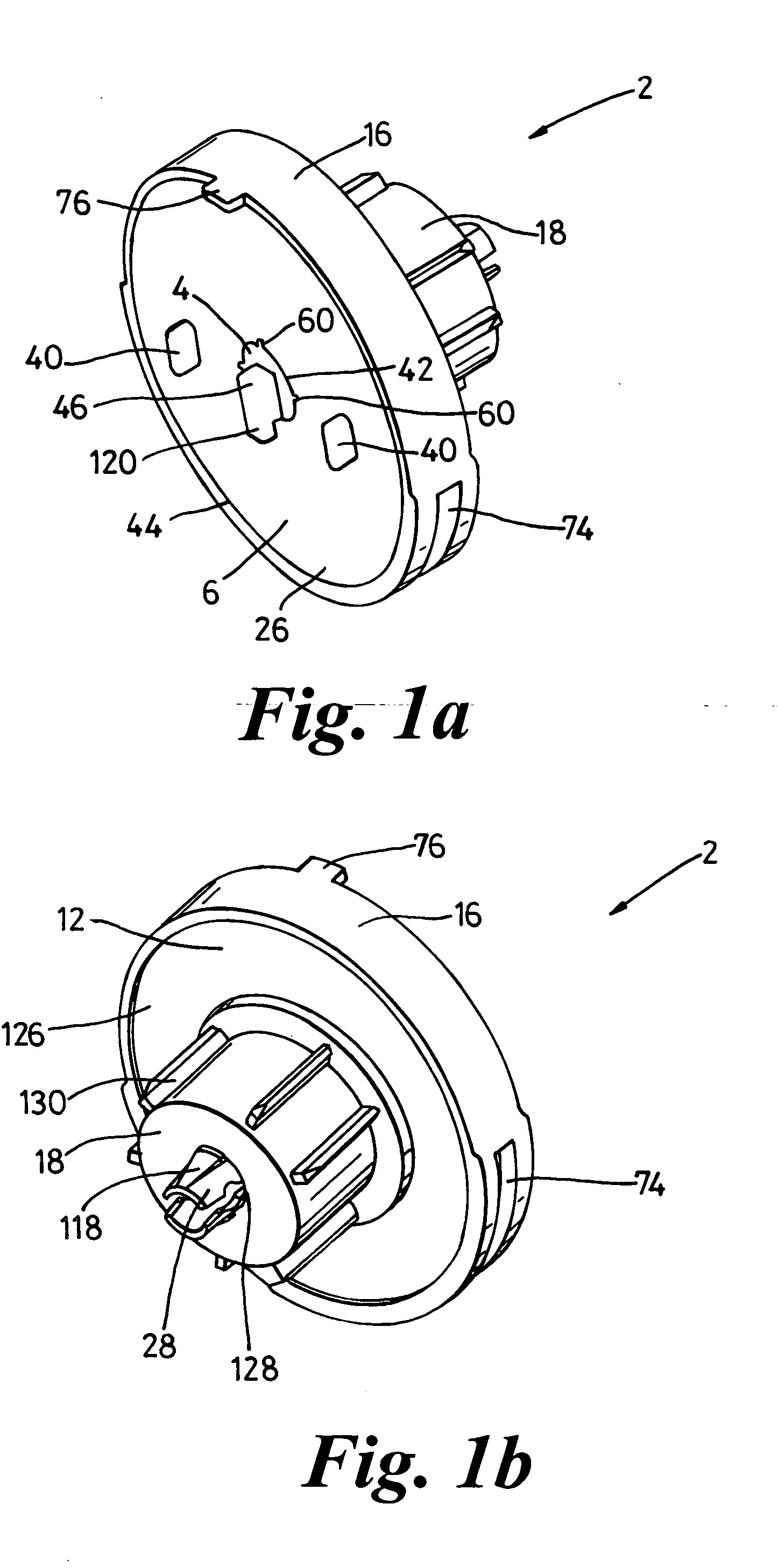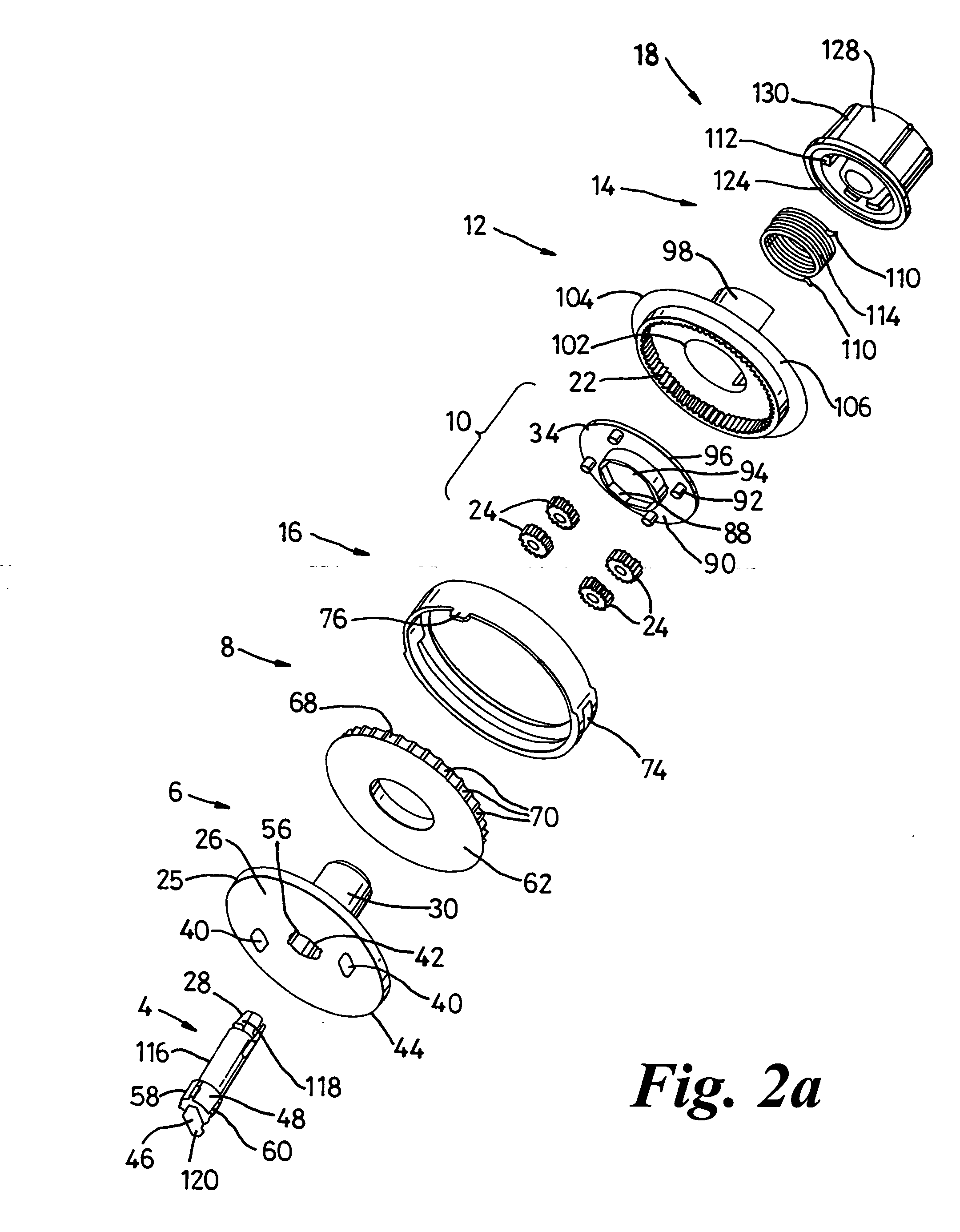Control units
a control unit and motor technology, applied in the field of control units, can solve the problems of increased effort required by users to change the position of the blind, increased manufacturing and installation costs of motor driven control units, and increased cost of manual operation systems, so as to facilitate user-friendly blind operation, reduce the effect of the gear reduction ratio and facilitate the operation of the blind
- Summary
- Abstract
- Description
- Claims
- Application Information
AI Technical Summary
Benefits of technology
Problems solved by technology
Method used
Image
Examples
Embodiment Construction
[0048] For the avoidance of doubt it should be noted that in this specification reference to ‘up’, ‘down’, ‘upper’, ‘lower’, ‘vertical’, ‘horizontal’, ‘front’, ‘back’, ‘bottom’, ‘top’ and related terms refers to the orientation that the components of the blind adopt when installed for normal use, as they are shown in the figures.
[0049] Unless otherwise stated all sizes described herein are to be taken as modified by the word ‘about’.
[0050] The objects and advantages enumerated above together with other objects, features, and advances represented by the present invention will now be presented in terms of detailed embodiments described with reference to the attached drawing figures which are intended to be representative of various possible configurations of the invention. Other embodiments and aspects of the invention are recognized as being within the grasp of those having ordinary skill in the art.
[0051]FIGS. 1a, 1b, 2a and 2b show a control unit 2 falling within the scope of th...
PUM
 Login to View More
Login to View More Abstract
Description
Claims
Application Information
 Login to View More
Login to View More - R&D
- Intellectual Property
- Life Sciences
- Materials
- Tech Scout
- Unparalleled Data Quality
- Higher Quality Content
- 60% Fewer Hallucinations
Browse by: Latest US Patents, China's latest patents, Technical Efficacy Thesaurus, Application Domain, Technology Topic, Popular Technical Reports.
© 2025 PatSnap. All rights reserved.Legal|Privacy policy|Modern Slavery Act Transparency Statement|Sitemap|About US| Contact US: help@patsnap.com



